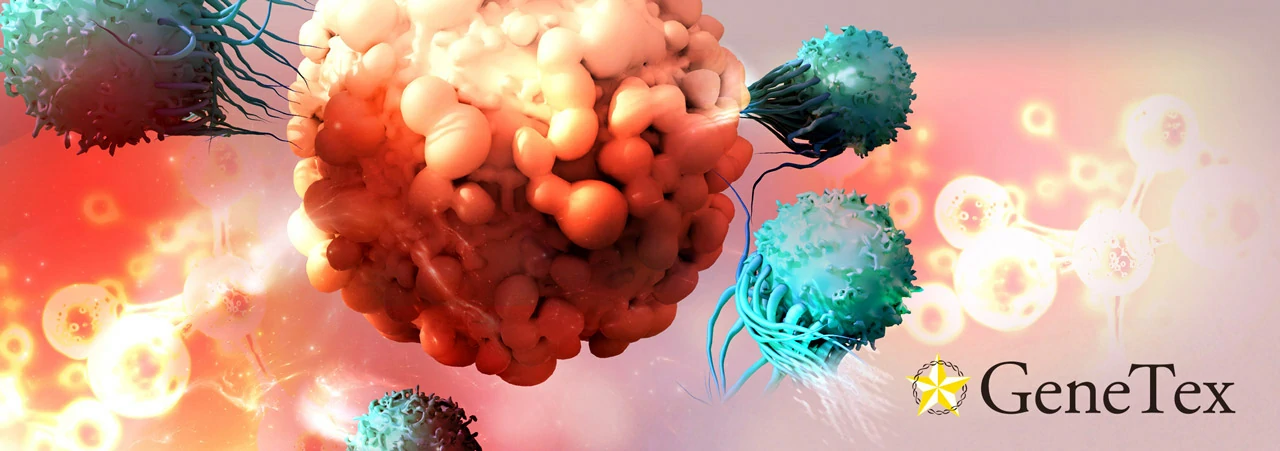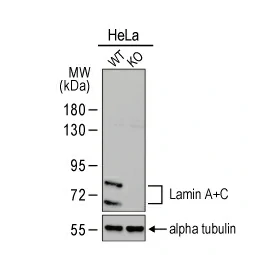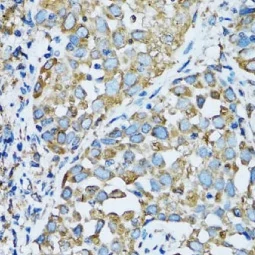The transition of antigen-specific naïve T cells into effector T cells (TE) is marked by a change to anabolic metabolism. Reductive carboxylation of glutamine (RC), facilitated by isocitrate dehydrogenase (IDH) 1 and IDH2, is known to occur in cancer cells to generate citrate, a major source of acetyl-CoA for cell growth and function. Though a similar process was thought to be active in CD8+ T cells, the mechanistic basis of this and how it influences the function and differentiation of TE cells was an open question.
A new study by Jaccard et al. sheds new light onto the role of RC in shaping T cell phenotypes (1). The authors used metabolic labeling, RNA-seq data analysis, and other techniques to find that TE indeed reductively carboxylate glutamine to an extent not noted in memory T cells (TM), which highlighted the distinctive reductive metabolite profile seen in TE versus the more oxidative profile of TM. In addition, they discovered that the RC in TE is mediated by IDH2 as well as by transcriptional and metabolic reconfiguration dictated by HIF-1α. Interestingly, the absence of IDH2 does not impede the expansion of TE functions but rather enhances TM differentiation. Excitingly, when IDH2 was inhibited during ex vivo generation of chimeric antigen receptor (CAR) T cells, TM were enriched and increased antitumor activity in melanoma, leukemia, and multiple myeloma models was noted. The researchers then identified specific chromatin changes that explain how IDH2 inactivation maintains chromosome accessibility of genes necessary for TM differentiation. The findings by Jaccard et al. are potentially revolutionary in terms of next-generation CAR T cell development, where IDH2 inhibition may leverage an increased TM presence to expand the durability and efficacy of CAR T-based therapies.
GeneTex offers an extensive catalog of quality antibodies and reagents for immunology and metabolism, which includes the IDH2 antibody [GT673] (GTX628487), Lamin A + C antibody (GTX101126), and OGDH antibody (GTX33374) cited in the Jaccard et al. study. For more information, please see the product data images below and visit www.genetex.com.
Highlighted Products
Reference:
- Nature. 2023 Sep;621(7980):849-856. doi: 10.1038/s41586-023-06546-y.

![IDH2 antibody [GT673] (GTX628487) IDH2 antibody [GT673] (GTX628487)](/upload/media/MarketingMaterial/Newsletter/2023/IDH2/landingPage_img_255x255_01.webp)


![Citrate synthase antibody [GT1761] (GTX628143) Citrate synthase antibody [GT1761] (GTX628143)](/upload/media/MarketingMaterial/Newsletter/2023/IDH2/landingPage_img_255x255_04.webp)
![PFKFB4 antibody [HL2204] (GTX638208) PFKFB4 antibody [HL2204] (GTX638208)](/upload/media/MarketingMaterial/Newsletter/2023/IDH2/landingPage_img_255x255_05.webp)
![KDM6A antibody [HL2068] (GTX637972) KDM6A antibody [HL2068] (GTX637972)](/upload/media/MarketingMaterial/Newsletter/2023/IDH2/landingPage_img_255x255_06.webp)